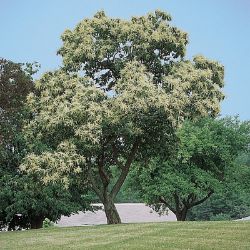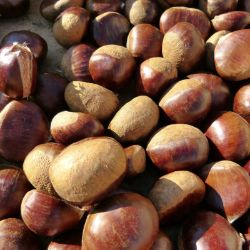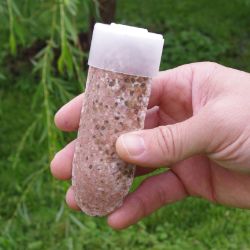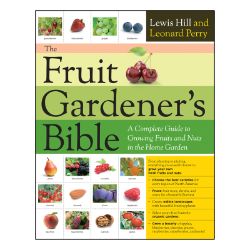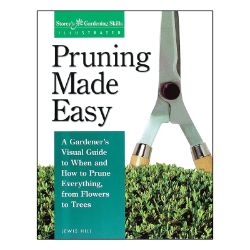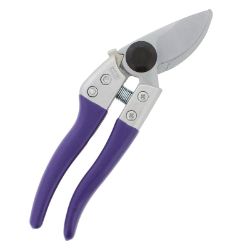Pest & Disease Control for Chestnut Trees
Every tree has the future potential for disease and insect damage. Factors such as location and weather will play a part in which issues your tree encounters. If available, disease-resistant trees are the best option for easy care; and for all trees, proper maintenance (such as watering, fertilizing, pruning, spraying, weeding, and fall cleanup) can help keep most insects and diseases at bay.
NOTE: This is part 7 in a series of 11 articles. For a complete background on how to grow chestnut trees, we recommend starting from the beginning.
Gall Wasp
This small wasp is a serious problem in the southern United States. It causes galls to form on growing shoot tips, stopping nut production.
Control
- Consult County Extension Agent
Weevil
The adult lays eggs in the developing nuts. Larvae hatch and feed on developing kernels. Over winters in fallen nuts. NOTE: fall clean up is essential.
Control
- Consult County Extension Agent
Powdery Mildew
Whitish-gray powdery mold or felt like patches on leaves and nuts. Leaves may drop early, weakening the tree. Nuts may have ‘shuck split’ and shriveled kernels.
Control
- Consult County Extension Agent
Japanese Beetle
Adult is metallic green beetle, which skeletonizes leaves. Larvae are a grub, which feeds on turf roots. Check turf product labels for timing of control of grubs. This is more of the problem is east of the Mississippi river.
Control
- Consult County Extension Agent
Shothole Borer
Small reddish-purple spots appear on young leaves then enlarge and eventually dropping out of the leaf blade leaving a “shot hole.” It appears on fruit, usually in clustered as light brown spots or lesions with dark purple margins.
Control
- Consult County Extension Agent
Chestnut Blight
Small orange brown area appears on the bark of a branch. Sunken canker may appear and the bark may split. Yellowish-orange tissue breaks through the bark of the canker. The canker spreads around the branch causing it to wilt and die.
Control
- Consult County Extension Agent
Phytophthora Root Rot
It causes weak plant growth and the development of small yellow leaves. Terminal growth may be stunted or die back. Plants often collapse and die during hot weather.
Control
- Consult County Extension Agent
Tent Caterpillar
Hairy caterpillars that enclose large areas in webbing and feed on enclosed leaves. Remove web with rake and burn. Caterpillars are pulled out with webs.
Chemical Control
- GardenTech® Sevin® Bug Killer













